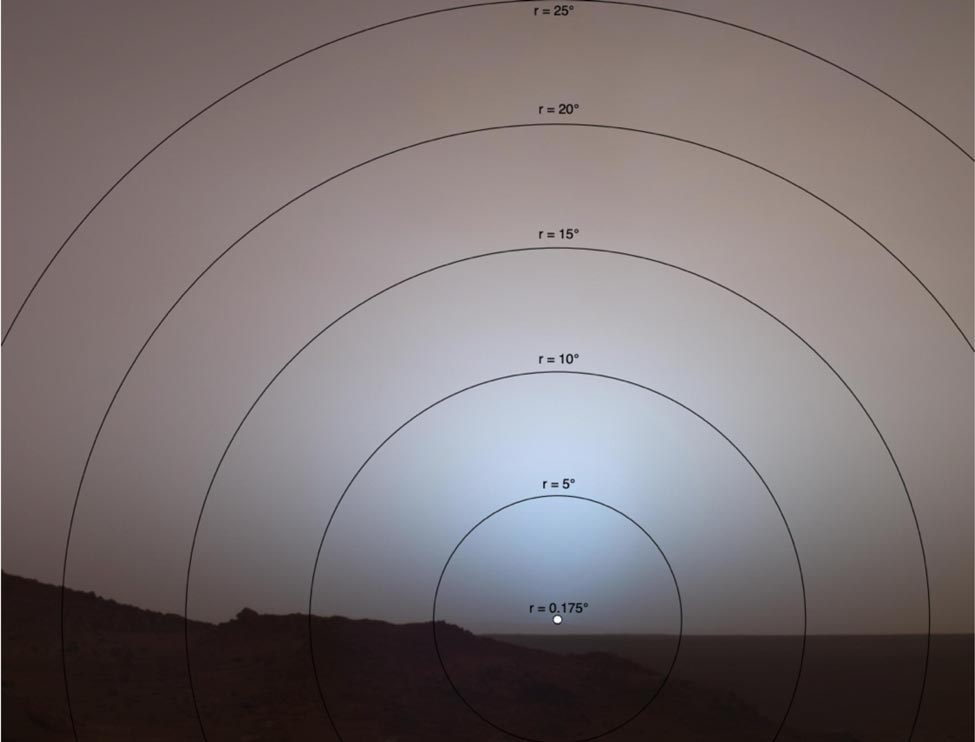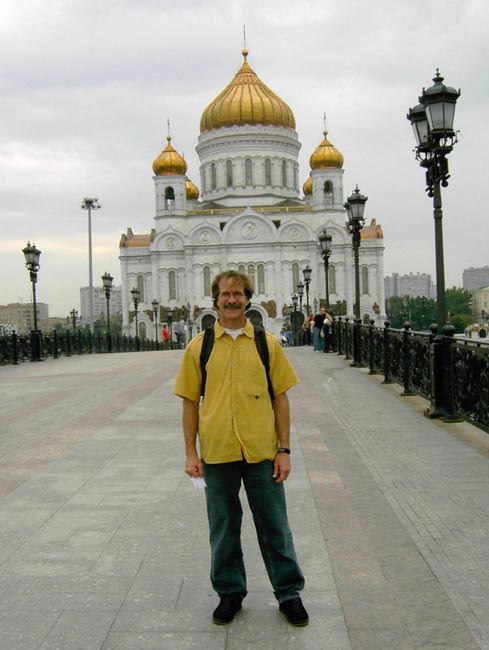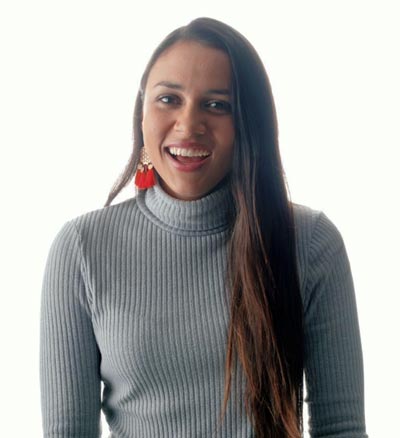Student Blogger Valeria Saborio Interviews TMCC Professor Kurt Ehlers: From Martian Sunsets to Math League

By Valeria Saborio
One of my favorite and unforgettable moments I have had so far here in the U.S. was the first day of my Calculus 1 class at Truckee Meadows Community College. I had heard all about Professor Kurt Ehlers. Everyone at TMCC would tell me how they loved his lectures and that he was an absolute genius. On the first day of Calculus 1 and after almost two hours of focused attention, writing 15 pages of notes, and trying to grasp all this new material, I was a bit overwhelmed to be honest. Professor Ehlers excitedly cleared the board, once again, to show us one last problem. He simply asked the class:
“Why is the sky blue and why are sunsets red?”
We all just stared at each other for a bit as he started drawing sine graphs on the board and explained how sunlight reaches Earth’s atmosphere and is scattered by gases and particles in the air. Blue light is scattered more than other waves because it travels as smaller and shorter wavelengths; this is why most of the time we see a blue sky. When the sun sets in the horizon, light is passing through more of the atmosphere, and even more of the blue light is scattered, allowing the reds, oranges and yellows to pass through our eyes. Professor Ehlers wondered if this happens in other planets as well. Here is where it gets fascinating: on Mars, the process is completely different due to its thin atmosphere scattering particles quite differently. That’s why during the daytime, in Mars, the sky is red and as the sun sets, the Martian sky is blue. Professor Ehlers worked for the Desert Research Institute and characterized the basic physics behind the blue sunsets on Mars.

Blue Moon Mars
This is just one of the many fascinating stories Professor Ehlers, or Kurt (as he likes to be called) has shared. As his student, it is a blessing to be in his class and ahead you will learn more about Kurt and his views on teaching, engineering, international students, and how to pursue a successful career.
Valeria: What made you decide to pursue a career in STEM?
Professor Kurt Ehlers: Ever since I was a little kid, I liked to take things apart and figure out why and how they work. I initially thought I might go into medicine or engineering. However, when I got to college I realized that studying math gives you the flexibility to work anywhere. While other subjects require a lab or special equipment, math just requires one thing: knowledge! Thanks to math I have traveled to many different countries: Brazil, Colombia, Spain, and Russia to name a few. When I was working on my Ph.D., my advisor (one of the top mathematicians in the world) and I would go for bike rides up in the mountains in the Bay Area (where I went to school), and we solved problems together. If we had to stop and write something down, we just took a stick and worked things out in the dirt... that’s how it worked for us and that’s what I like about math: I can do it anywhere. I enjoy wondering about things like: why the sky is blue, why the Martian sunset is blue instead of red like it is on Earth. I just like figuring out how nature does what it does and why it does it. I also enjoy being outdoors kayaking, climbing, or hiking.

Kurt hiking Half Dome

Steklov Institute of the Russian Academy of Sciences
Valeria: What has been your most remarkable experience, professionally speaking?
Professor Kurt Ehlers: My experiences divide into the two fields I pursued: research and teaching.
As a researcher, I have had some neat things happen. I wrote my first paper many years ago with a famous biologist from Harvard. I had discovered something that would help him with his topic of study, so I reached out to him and he was willing to write the paper with me. Interestingly enough, just recently I met with another biophysicist at UC Berkeley, and we wrote a paper together on the same topic that I wrote 30 years ago, with some new exciting discoveries on biological motilary (this is how single cell organisms move, swim through fluids, and many other biological functions). When I started, there were only a few of us doing this; nowadays, about every university studies the application of this field. Why is this information relevant? Well, from an engineering standpoint, it relates to very advanced concepts like nanotechnology, which is how to move things on a very small scale. In biology, its importance goes deeper into the model of the self-propulsion of microorganisms. I was also an undergraduate at the Naval Academy, and I was an officer in the U.S. Navy for a number of years. In retrospect, my favorite part was meeting a lot of people from different parts of the country. The fact that we all had very different backgrounds and stories was eye-opening for me, and I learned to appreciate each other’s views.
As a teacher, the most rewarding feeling has been seeing what happens to my students after college. I have had so many students transfer to some of the best schools in the country, pursuing successful careers. One of my students became the chief executive engineer at Quickbooks. Another student transferred to the same school I went to (UC Santa Cruz) and is now working with my former Ph.D. advisor, so she followed my footsteps a little. One of my heroes was a student who dropped out of high school, came to TMCC at 23 years old with two young children, became a math major, transferred to UNR, and got straight As. Now he teaches math at Hugh High School in Reno, where he mentors his students to follow a successful career and save some of the trouble he went through. He is one of my big heroes for sure. Definitely my favorite part about teaching is when my students are successful and connect with me through the years.
Valeria: How long have you been working at TMCC? How do you like the college community here?
Professor Kurt Ehlers: Twenty years ago I was teaching in a Ph.D. program in Brazil. I thought I was going to live there for the rest of my life. An unexpected event made me return to the U.S. to take care of my family, and I applied as a professor at TMCC right away. I learned to appreciate the hardworking students at TMCC and the stories behind their dedication and perseverance. I enjoy learning from students who really want to succeed and pursue excellence in their lives through their careers.
Valeria: What is your favorite part about having international students in your class? Any memorable experiences?
Professor Kurt Ehlers: The most important thing to me is the fact that international students can bring so much culture into our community and teach the local students about their background. I also admire how international students adapt to a whole new environment with so many unknowns but succeed and become a part of the TMCC family. I have been to the TMCC International Club a few times, and I even taught one of my students from Japan how to climb — he got pretty good, actually!
Valeria: You started a group on campus called Math League where you share your expertise on topics like applied mathematics, optics, biophysics, and classical mechanics. Why did you start this club? What has been the response from students?
Professor Kurt Ehlers: Math League started when I went to Maryland for a year to teach at a college there. Every Friday all math majors meet with all the math professors for an hour. We would draw a straw, and the professor who lost had to give a one-hour talk on something they thought the students should know that was not included in the curriculum. However, professors could not come prepared, and we were expected to teach it “off the top of our head.” I thought it was a great idea to implement at TMCC. It has been 15 years now. We started with 2-3 students, and now it’s over 40 of us meeting each week. Math League is great because my students have developed further mathematical knowledge and skills that enrich their learning experience and can be applied to many fields.
Some of my students’ all time favorite lessons have been learning about perfect numbers, the golden ratio, and the Fibonacci sequence. Learning about math’s most interesting topics applied in nature and engineering “just for fun,” helps students with their grades and other classes.
Valeria: What do you think is the most important skill an engineer or scientist should have and why?
Professor Kurt Ehlers: Well, I'm not the first one to say this, but I really believe it is communication and language skills. If you want to become a successful scientist or engineer, learn how to write and communicate well. Pay attention to your language classes. You have to have the ability to communicate ideas, especially those that are complex to understand. As a naval engineer, I spent more time writing memos to people above me and evaluating people who worked for me than doing equations all day. Good speaking skills and good writing skills can go a long way and can not only shape you as an engineer but also as a leader!
If you’ve ever had second doubts about going to a community college, I hope reading this interview changed your mind. As you can see, at community colleges you can find dedicated and amazing professors who are highly prepared and really care about their students’ academic and personal success.

Valeria Saborio is from Costa Rica and is pursuing her Industrial and Systems Engineering degree at Truckee Meadows Community College in Reno, Nevada.
Valeria Saborio
Get matched to the best program for you
Let us know what you're looking for so we can find the best school for you.
Useful Articles
Check Out These Schools


Santa Rosa Junior College
$10,000 — $15,000 Year

Start your U.S. adventure with Study in the USA

Learn About U.S. education financing, housing, and more
Resources
Learn about American culture and education direct from our experts at Study in the USA. Read more












